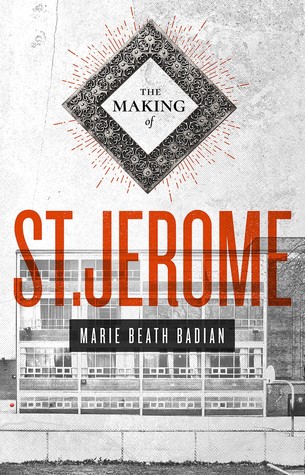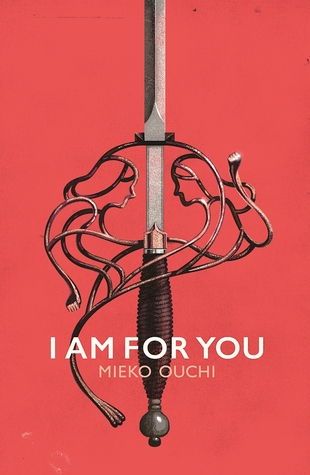Some plays, like Huff & Stitch and Punch Up are so visceral that just reading them feels a bit like seeing them performed on stage. Others, like The Making of St. Jerome and I Am For You, have such compelling narratives that reading it feels like slipping into the rich tapestry of a novel.
The Making of St. Jerome by Marie Beath Badian
 Sadly still all too timely and relevant, this play was inspired by the 2004 shooting of a Filipino Canadian teenager by a police officer in Toronto. The story is told from the perspective of the victim’s older brother Jason de Jesus, who is dealing with grief and guilt around the circumstances leading up to his brother Jerome’s death.
Sadly still all too timely and relevant, this play was inspired by the 2004 shooting of a Filipino Canadian teenager by a police officer in Toronto. The story is told from the perspective of the victim’s older brother Jason de Jesus, who is dealing with grief and guilt around the circumstances leading up to his brother Jerome’s death.
“It was just supposed to be a fight, Jay. Just a fight,” Jerome’s friend Dean tells Jason about the incident. After some white teenagers tell a Filipino teenager to “go back where you came from and eat your rice,” the teen’s friends decide to retaliate. Plainclothes police officers got involved, and twenty-seven seconds later, Jerome has three bullet holes in his back. The police officer claims self-defence.
“Say Jer really did have a rock,” Jason tells the audience. “Say all that shit really happened. …Now picture this. Kids. Just kids. Don’t think a bunch of thugs, don’t think gangs, think kids.” A chorus demands he tell the truth, and he continues:
The cops show up. They don’t see just kids. They see — Jane and Finch Kids. Clarkson Kids. Tuxedo Court Kids. Bendale Kids. Crescent Town Kids. Galloway Kids. …To them it’s a situation. To them it’s an incident. To them it’s an altercation. They show up–not with pepper spray or batons or tasers, even. But with guns. …And suddenly here I am being a spokesperson instead of a brother. [pp. 62-63]
The emotional heft of St. Jerome isn’t just in the systemic issues it brings to light, but rather in the intimate glimpse into the relationship between the brothers. Their relationship is fairly typical, with the usual sibling rivalry and Jerome admiring his older brother as a child, but with Jerome’s death, the tensions feel more fraught for Jason, and he can’t help remembering the arguments they’ve had, and his jealousy of Jerome’s relationship with their parents. At its core, St. Jerome is about the love between brothers, and is a moving, poignant tale.
I Am For You by Mieko Ouchi
 When student teacher Caddell Morris encounters two girls fighting on his first day, he responds by giving them a legitimate excuse to fight — as Mercutio and Tybalt in their school’s production of Romeo and Juliet.
When student teacher Caddell Morris encounters two girls fighting on his first day, he responds by giving them a legitimate excuse to fight — as Mercutio and Tybalt in their school’s production of Romeo and Juliet.
I Am For You is such a fun play for Shakespeare nerds and theatre buffs. It presents a classic Shakespeare tale in a new light, focusing on Mercutio and Tybalt rather than on the eponymous couple, and reframing Romeo and Juliet as an action-packed story of violence and tragedy rather than the usual romance. It also takes us behind the scenes on how fight scenes are choreographed and rehearsed, which was pretty cool for me to learn about.
We never really quite learn exactly what Lainie and Mariam were fighting about in the first scene, but Ouchi does a great job in presenting aspects of their personality that could have led to the tensions. Lainie is familiar with fighting and has been to the principal’s office so often that she’s in danger of getting expelled. In contrast, Mariam’s combat knowledge is very structured; she takes fencing classes at a nearby college and is the youngest student in that class. Their rehearsals for Romeo and Juliet include both sword fighting and hand to hand combat, which gives each girl the opportunity to gain the upper hand.
I love how the structure of stage fighting helped both girls learn about how they approach conflict beyond the play. For example, while learning to fence, Lainie learns that aggressive movements with the foil actually makes you more vulnerable to getting hit, whereas a light touch gives you the control you need to win the fight. While learning hand to hand combat, Mariam learns to engage with her partner with a believable level of aggression, to “sell” the fight. And also while learning hand to hand combat, both girls learn that when throwing or pulling hair on stage, it’s actually the “victim” who keeps control and directs the action. Ouchi weaves these acting lessons in with real life character development for both girls, and it was just fun to read.
+
Thank you to Playwrights Canada Press for copies of these books in exchange for an honest review.
